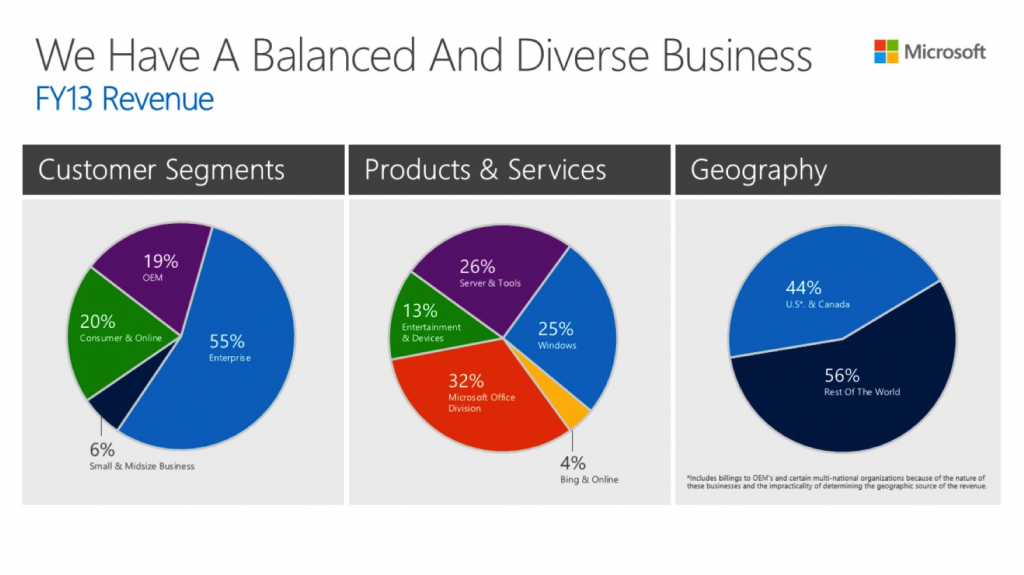We’ve had roughly two weeks now of fascinating insights into Nest specifically and Alphabet’s Other Bets in general, and I wanted to chime in on all this and revisit some of what I’ve written previously on the topic. For a quick primer on all that’s been going on, I suggest this brief reading list:
- Google puts Boston Dynamics up for sale – Bloomberg article which suggests poor cultural fit, a lack of obvious routes to making money, and a general clampdown on financial responsibility at Alphabet companies
- The Information’s lengthy article about Nest and Tony Fadell’s struggles there, which also mentioned the financial clampdown
- Recode’s Mark Bergen writing about Alphabet’s broader CEO troubles
- Another Mark Bergen piece about revenues at Nest and the two other moneymaking Other Bets (which happens to track pretty well with my estimates of these companies’s revenues here).
In three previous pieces, I wrote about Larry Page’s vision for Google as an emulator of the Berkshire Hathaway model, and then about the decision to turn Google into Alphabet, and subsequently Alphabet’s first set of financial results.
In the first of those pieces, I wrote these thoughts about why the Berkshire Hathaway model wasn’t appropriate for Google:
…the pieces of Google aren’t and can’t be independent in the way BH’s various businesses are, because many of them (including some of the largest, such as Android and YouTube) simply aren’t profitable in their own rights. Though the management of some of these bigger parts can be given a measure of autonomy, they can’t run anything like BH’s various subsidiaries can because they rely on the other parts of Google to stay afloat.
… if Page really is planning to build a conglomerate, that’s even worse news. For one thing, he’s absolutely the wrong guy to run it if he’s using Warren Buffett’s model as his ideal. Warren Buffett is, above all, a very shrewd investor, and Page’s major acquisitions have been anything but shrewd from a financial perspective.
Given what’s happened over the last few weeks, it’s becoming clear that even though Page really isn’t the right person to be running all this, Ruth Porat was brought in to offer exactly this kind of stricter oversight of the Other Bets. The challenge is that Google was never run this way, and so there’s a cultural clash there, which is only exacerbated in those parts where businesses were acquired and therefore brought their own distinct cultures. In some of the Other Bets, you now have a three-way culture clash, between the old Google culture, the new Porat-driven culture of financial discipline, and the mishmash of other cultures in acquisitions like Boston Dynamics, Nest, and Dropcam.
On balance, this tighter financial scrutiny is a good thing, and addresses some of those criticisms in my earlier pieces. In fact, in our 2016 predictions podcast, I made a somewhat out-there prediction that Alphabet would end up selling or spinning off at least one of its businesses in 2016 as a result of either poor fit or financial performance. Even I didn’t have that much confidence in that prediction, but it’s turned out to be accurate with the planned sale of Boston Dynamics. But none of that is to say that this is going to be painless for Alphabet or the individual Other Bets. It’s going to be a tough couple of years as this cultural clash works its way through.
Quick thoughts on Tony Fadell
Before I close, I wanted to just touch quickly on something I’ve hinted at on Twitter but haven’t really written about properly anywhere, and that’s Tony Fadell’s management style.
Much has been made of how Fadell’s style seems to emulate Steve Jobs’ style in many respects. The big difference, though, is that Steve Jobs always owned his brusque, rude style and never apologized for it (for better or worse). He recognized that his style wasn’t going to be popular, but believed it was still the right way to go even if people hated him for it. The difference with Fadell is that he seems to want to have his cake and eat it too – he wants to behave the way Jobs did but be loved as well. One of the strongest indicators of this is the way he seemed to recruit people to come to his defense following earlier critical articles (here and here) on his management style, and then retweeted their positive comments: There’s nothing wrong with defending your management style if you believe it to be right, but there’s something disingenuous about embracing Steve Jobs’ abrasive style while also wanting to avoid the consequences. This was Steve Jobs’ approach to the same problem, as articulated by Jony Ive:
There’s nothing wrong with defending your management style if you believe it to be right, but there’s something disingenuous about embracing Steve Jobs’ abrasive style while also wanting to avoid the consequences. This was Steve Jobs’ approach to the same problem, as articulated by Jony Ive:
“I remember having a conversation with [Steve] and I was asking why it could have been perceived that in his critique of a piece of work he was a little harsh. We’d been working on this [project] and we’d put our heart and soul into this, and I was saying, ‘Couldn’t we … moderate the things we said?’
And he said, ‘Why?’ and I said, ‘ Because I care about the team.’ And he said this brutally, brilliantly insightful thing, which was, ’No Jony, you’re just really vain.’ He said, ‘You just want people to like you, and I’m surprised at you because I thought you really held the work up as the most important, not how you believed you were perceived by other people.’
I was terribly cross, because I knew he was right.”
